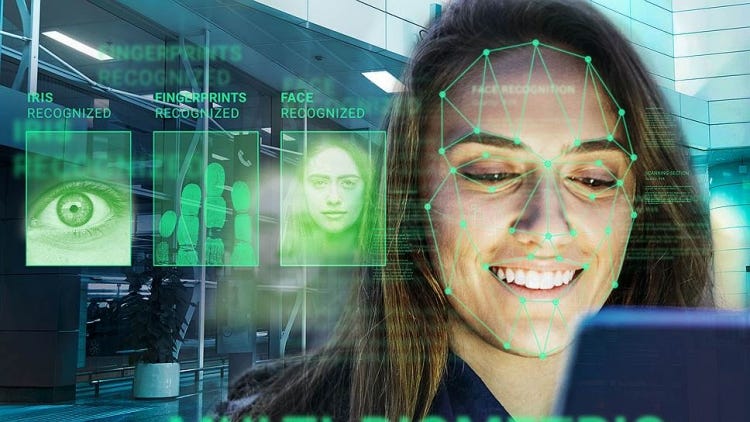How do face recognition algorithms work?

Original Source Here
How do face recognition algorithms work?
Biometric facial recognition uses unique mathematical and dynamic patterns to make this system one of the safest and most effective security measures. As a rule, the face detection process consists of the following steps:
- Face detection. The camera detects and recognizes a face either alone or in a crowd. No matter what technology you use, it’s better to have consistent lighting, high camera resolution, and limited motion. Lighting has to be bright enough to provide enough contrast for the recognition algorithm. Many systems require a certain number of pixels to identify facial features, and if you want to detect a larger area, you need to increase the camera resolution. Cameras with high frame rates will help you avoid problems with subject motion.
- Face analysis. There are two main methods for capturing and matching faces. The first measures various features of a person’s face. These geometric measurements are then stored in a database for later comparison. The second method is more complex. It captures the full facial image and uses as much information as it can. Then it uses various computer algorithms, including machine learning, to build a set of definition data.
- Conversion of image into data. Then the analysis is converted into a mathematical formula. The detected facial features are converted into numbers in a code called a faceprint. Every person has their own faceprint consisting of a unique set of physical features.
- Identification of a match. Finally, the system compares the code to a dataset of other faceprints and identifies a match with attached information. The underlying principle here is called object classification. During this phase, the system detects multiple objects in an image that comprizes both object localization and object classification.
What is deep learning, and how does it improve face recognition technology?
Deep learning is one of the most up-to-date ways to improve the accuracy of face recognition software. It extracts unique face embeddings from images of faces and uses a trained model to recognize photos from a database in other photos and video. There are two common methods to use deep learning for face recognition systems:
- Use solutions with pre-trained models like Exadel CompreFace, DeepFace, or FaceNet (among others). Models like these already have a set of algorithms for face recognition purposes.
- Develop a neural network from scratch. This is suitable for complex face recognition systems with multi-purpose functionality. It takes more time and requires a lot of images for the training dataset.
When developing a network architecture, it’s better to apply convolutional neural networks, as they are more effective in image recognition. The main benefit of the neural network in face recognition is the ability to train a system to capture a complex class of face patterns. The neural networks are non-linear in the network, so it is a widely used technique for face recognition. Many common recognition problems like character or object recognition have been successfully solved by neural networks.
What are the ongoing challenges in face recognition?
Despite the variety of face recognition systems and the technological advancements achieved in recent years, facial detection systems still face some inherent challenges.
Pose. Pose variation is one of the main problems, as the majority of face recognition methods rely on head-on images. There are multiple approaches to mitigate this. The multi-image-based approach requires several images for training. The idea is to make templates of all the possible pose variations. The single-model-based approach uses several examples of a subject during training, but only one image at recognition. The aim is to include every pose variation in a single image. There’s also a hybrid approach that tries to use a few images and model the rotation operations so that every single pose can be deduced from just one frontal photo and another profile image.
Illumination. Illumination variations in images are an essential factor in face recognition. The intensity of the color in a pixel can vary greatly depending on the lighting conditions. The big problem is that two faces of the same subject with different illumination may show more differences between them compared to another subject. To solve this problem, some recognition methods try to model a lighting template in order to build illumination invariant algorithms. The goal of these methods is to make shape and texture independent from light variations.
Occlusion is another challenging face recognition problem. When one or several parts of the face are blocked, it’s impossible to take an input image. This can happen due to accessories (glasses, masks, etc.), moustaches, or beards. This can seriously affect the recognition system’s classification process.
Expressions. Different emotions cause different facial expressions. These differences in facial expressions change the appearance of the face and may cause a facial detection system to inaccurately match images stored in the database.
There are other problems related to face expression, optical technology, and memory usage, however they don’t pose a serious problem to how facial recognition works. Although face recognition technology is extremely popular and the market is rife with advanced technologies, there is plenty room for innovations in the field of automated face recognition.
AI/ML
Trending AI/ML Article Identified & Digested via Granola by Ramsey Elbasheer; a Machine-Driven RSS Bot
via WordPress https://ramseyelbasheer.io/2021/06/23/how-do-face-recognition-algorithms-work/